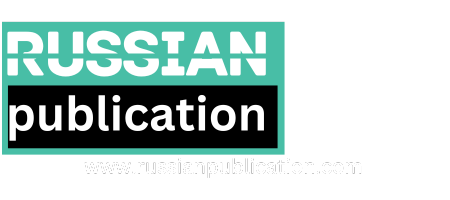The recent US tariffs have spooked the World and created havoc in the currencies and stock markets everywhere. Markets do not tolerate sudden changes to their current equilibriums, regardless of the strength or validity of such equilibriums. As such, they are similar to humans who are only comfortable with what they know and are used to and abhor change. But change is a fact of life, and one should always expect it and prepare for it.
President Trump faces a multitude of difficult problems that have piled up over decades: economic, political, social, environmental, health services, educational, infrastructure, etc. He must also deal with a variety of wars, present and future, which are very expensive with unknown outcomes. And on top of that, he must carry the heavy burden of huge deficits in both the US balance of trade and the current account, as well a mountain of public debt which is difficult to imagine how it can be repaid, let alone stopped from growing.
Almost every day, one of these problems explodes and Trump must quickly act to return it to its container. He has become like the stage performer who spins plates on top of sticks by shaking them, and then must constantly run between the sticks to shake those that are waning, lest their plates fall. This parody may explain his unending spewing of strange and weird announcements and threats, such as annexing Canada, Greenland, Panama, transforming Gaza into a Riviera, ending the Ukrainian war within a month, and many more.
Are these unorthodox head-of-state declarations a ploy to hide the true dire status of affairs from the American public, as well as frighten the rest of the world? Possibly, but these actions also conform with his business mentality reared in the vicious, volatile, and high-risk real estate sector. His 1987 book “The Art of the Deal” illuminates his modus operandi as comprising trickery, hiding his true intentions and plans, and always camouflaging everything with a huge dose of inaccurate advertising and publicity.
As one current example, we mention the approaching liquidity crisis, where the Federal government’s finances are rapidly depleting and, unless Congress raises the public debt ceiling, the US will theoretically become unable to pay its expenses, as early as this coming Summer! The hitch is that a good part of Congress is against increasing the public debt, including a few Republican Senators. Accordingly, President Trump must convince Congress that he is able to lower the debt and increase budget revenues, and hence, the Tariffs can be used as a banner heralding the arrival of a new sources of budget revenues.
The White Man’s Burden: Chasing a Mirage
Vlad Ivanenko
What is more important for the global leader — the soft power of wealth or the hard power of the sword? Upholding the dominant global position with the power of sword flatters the ego of American power brokers but, from the financial perspective, this game might not be worth a candle.
More
The Tariffs – Some Clarifications:
What are They: Basically, a US custom duty of 10% across-the-board on almost all items imported. Plus, a “Reciprocal” duty ranging between 10% and 50%. Plus, extra duties on specific items such as vehicles, aluminum, steel, etc. And, on top of all that, there are the past, present and future politically motivated sanctions duties.
It is interesting to note that the “Reciprocal” tariffs are not reciprocal. Instead, they seem to have been questionably concocted to arrive at a predetermined conclusion. As per US Think Tank: American Enterprise Institute, the reciprocal tariffs are based on an erroneous mathematical formula that ignores important factors and should be at a quarter of the level they were announced. One of the sad paradoxes of this reciprocal tariff is where a poor country, such as Bangladesh, which cannot afford to buy and import expensive US products, but because of its low local wages can produce and export a lot of competitively priced items to the US, is punished by a high tariff at the US border: 37% instead of 10%! Another paradox is that the exports of many countries are charged at a much higher US tariff rate than which these countries levy on imported US products. Obviously, these tariffs were sped through the mill without deep study.
The Legality of the Tariffs: Custom duties are taxes, and US taxes are the exclusive prerogative of Congress. In fact, the 25% tariff on Canada was struck down in a recent Senate vote, which included four rebellious Republican Senators! However, it is likely to be pass in the House of Representatives. Nevertheless, the resistance to the tariffs is expected to continue, not only in Congress, but also in the US courts as more US negatively impacted companies seek legal redress.
The Economic Objectives: The first objective is to punish those countries that the US reckons hinder the importing of US goods into their markets and force them to lower the barriers and increase their imports of US products. This view is also consistent with Trumps belief, which he has for decades publicly complained about: that the rest of the world is blatantly robbing the US!
Whereas, as per the “Triffin Dilemma”, the real reason for the US trade deficit is the predominancy of the US Dollar in international trade and its role as top reserve currency. For this to occur, the US must carry a permanent trade deficit to continuously flood the world with Dollars that would, anyway, return to the US in the form of deposits, treasury bills, or investments. The returning the Dollars ensure that interest rates remain low, guarantying the Federal Government’s ability to continue merrily running a budget deficit, and borrow cheaply to feed its ‘debt monster’.
Also, it should be noted that the budget deficit is the result of continuous government overspending, especially on consumption as opposed to investment, as the dilapidated infrastructure clearly indicates. Defense spending is another major and growing contributor to the deficit. In short, this Dollar hegemony allows the US to ignore the necessity of raising real productivity and enact needed higher taxes. Instead, it lowers taxes!
The second economic objective is onshoring of industry a.k.a returning the wayward absconding American industry that had fled to greener pastures in China, Asia, and elsewhere. But the fact is that the reason for the original migration was simple: greed and maximization of profits. Hence, the tariffs may not be enough to lure them back.
The third, fourth, and fifth objectives seem rushed and revolve around creating a new source of budget revenues, increasing exports of US farm products, and strengthening the US economy & creating job opportunities.
The Political Objectives: the insufficiently thought-through tariffs, and their unjustified variances among different countries, indicate the presence of covert political motives and plans. Based on past and present US rhetoric, it is easy to imagine that the main plan would be the obstruction of the current international trade system which is benefiting the rest of the world (ROW) and enabling it to increase its exports and trade. The system that has begun to gradually liberate the ROW from the clutches of western influence that has stifled its development for ages. The undermining of the current international trade system would likely entail an attempt to obstruct and weaken all types of blocs, cooperations and gatherings, such as BRICS, et al.
Additionally, keeping the US door ajar for countries seeking to negotiate the tariffs on a one-to-one basis, seems to be more of a lure to entrap smaller and weaker countries into being bullied to relinquish their comparative advantages, assets, and future. The correct place for such negotiations is group discussions, preferably under the World Trade Organization (WTO) umbrella. Otherwise, it is not difficult to imagine a scenario where a one-on-one economic negotiation is easily sidetracked towards political issues that demand the curbing of internal and external policies undesirable to US strategy.
Possible Outcomes of the Tariffs:
Inflation: it is known that custom duties (tariffs) tend to be inflationary as well as shrink demand. However, the presidential advisers’ dubious calculations lead them to believe that the tariffs would force other countries to devalue their currencies, thus erase the inflationary impact of the tariffs on the American consumer. This remains a theoretical and untested idea, but history leans towards an inflationary outcome.
On the other side of the coin, the other exporting countries, the victims of the tariffs, are at risk if they panic and rush to devalue their currencies. Subject to the status of their economies, they could trigger the dreaded inflation locally, as well as damage their economies.
Economic Slowdown: Raising the costs of US imports through tariffs, is likely to raise the costs of the products sold in the market (shift aggregate supply) and, hence reduce consumers desire to buy them (shrink aggregate demand). Such a scenario would force US businesses to reduce their outputs and dismiss employees, thus feeding unemployment and ushering in a recession. If a recession is accompanied by inflation, then a ruinous stagflation would be in the books, similar to what occurred in the 1970’s.
Of course, the rest of the world would also be susceptible to economic slowdowns and recessions, especially those countries that rely heavily on exporting to the US and are unable to find alternative markets or solutions. Nevertheless, after some chaos and confusion, most countries will be obliged to restructure themselves to go on living, and hopefully prosper.
No doubt that the US market is big and lucrative, but it is not the only one. After all, true power is that of producers and not consumers. “Say’s Law” reminds us that “Supply creates its demand!”, both internally and, to a large degree, externally.
Capital Flight: The confusion and faltering of international trade will shrink exporters surpluses, which are predominantly in Dollars. These surpluses usually automatically head back to the US, the ‘safe haven’, and thus supported the US economy. But now, these surpluses will not only dwindle, but the exporters (the surplus holders) will be too spooked to deposit their hard-earned money in a moody and volatile market, which is on the verge of slowing down, or worse.
Financial Markets Chaos: On announcing the tariffs, the world financial markets crashed. This is normal and expected, for the markets have an uncanny sixth sense enabling them to read and react to unseen events. Some may contribute to the adage, that capital is cowardly, but the truth is: successful capital is wise and prudent.
Additionally, the markets’ crash may have been a godsend and well past due. It was a correction to an overinflated dangerous price bubble that has been growing unabated for quite a while. As such, the tariff crash may have preempted a bigger and more ruinous bursting of the bubble later on. Warren Buffet the famous investor Billionaire had anticipated the overpriced markets and liquidated a good portion of his investments almost a year ago. He now sits on a cash stash to the tune of $300 Billion! Is he likely to reinvest it outside the US?
Banking Chaos: Banks income is generated from loans and financing deals, and acquisition and takeover deals contribute substantially to their profits. After the tariffs’ announcement, a good number of acquisition deals (according to Bloomberg) have been stalled, and the ‘Hung Debts’ are tens of billions of Dollars – and the tariff crisis is still in its early stages!
Reshoring Industry: One would imagine that in view of the industrialists’ foggy outlook and doubts regarding the seriousness and sustainability of the US government’s decisions, they are more likely to wait and see before returning.
Especially as they have spent billions establishing their factories overseas, hired and trained an efficient and competitive labor force, built a reliable network of suppliers of raw materials and components, and carefully tested and selected efficient shipping routes and contractors. They are unlikely to know drop everything and rush back to zero.
Lastly, restarting their production in the US will require years of planning, construction, tooling, hiring, and rebuilding their networks. Even then, can they remain competitive with their new higher costs? Will the US market be big enough to absorb their ambitious plans and production output? One is inclined to think that the return of industry is not easy nor a forgone matter.
Conclusion:
There are reservations regarding the reality, seriousness, and longevity of the announced tariffs. To some, they may appear as one of President Trump’s continuously repeated false alarms and threats and are likely to disappear or be gradually adjusted and changed until they bear no resemblance to their original form.
Additionally, we have so far not seen the reaction of the rest of the world, other than some 40 odd countries who were reported by the White House as submitting requests for negotiations meetings. To date, only China has countered with truly reciprocal tariffs, and now all eyes are on the anticipated responses of the remaining 150 odd countries.
Will the world succumb timidly to unilateral bullying, or will it continue on the path of self-interest. Will they win their own “Liberation Day” by ignoring the never ending external financial, military, and political pressures? Will these tariffs, in the end, usher in the very changes that they set out to destroy and bury?
Trump—More Like Gorbachev Than Deng?
Rein Müllerson
With any luck, Donald Trump’s second round in power may contribute to cooling down the British and other European leaders’ missionary zeal, although it is not so much the personality of the U.S. 47th President that matters as the revolutionary situation in the United States and the changing geopolitical and geo-economic configuration of the world.
More










